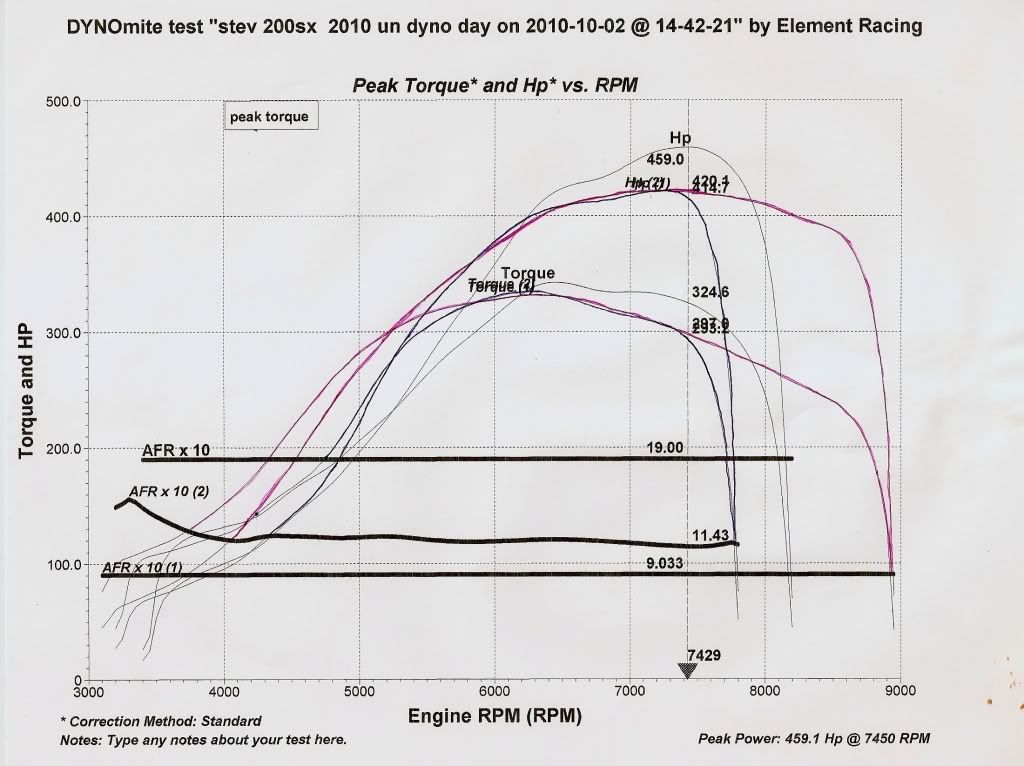They are more conservative. They are obviously tuned off of a very large turbo car. The timing maps are conservative across the board, but that is ok. I just run a 17* advance and the tune is pretty decent. I've thought the tune would be an issue, but when putting in some race gas and bumping the timing i failed to see any increases past 20* advance. When the car was NA this was the same case. 19* base when I was NA provided the best power, then after that the top end dropped.
The VVL will take a pretty large turbo to see its full potential. A few of my friends have larger turbos and they make about 420-460whp with 60-1 turbos on relatively low boost. By low, I mean about 16-22psi. At this altitude that is pretty good. Sea level psi would likely be around 13-19psi for these power levels.

The pink line is me, 22psi GT3076r TS with SR16 cams.
The black line is a 200sx with a 60-1 on a shorty manifold, NISDA standalone, 20psig.
The blue line is Sandy's car, also on a 60-1 with a UQL mani and 16-17psig. NISDA standalone.
You can see that the larger turbos make the same power on 5psi less boost, yet only spool marginally slower than my twin scroll setup. The response on the street is another story, the twin scroll is much more responsive, but power output remains the same as the larger turbos. On the street this engine was pumping 26psig boost which is ~23psi sea level. The dyno wouldn't load the engine enough to get full boost.






 Be the first to like this post.
Be the first to like this post. Be the first to like this post.
Be the first to like this post. Be the first to like this post.
Be the first to like this post. Be the first to like this post.
Be the first to like this post. Be the first to like this post.
Be the first to like this post. Be the first to like this post.
Be the first to like this post.
 Be the first to like this post.
Be the first to like this post.